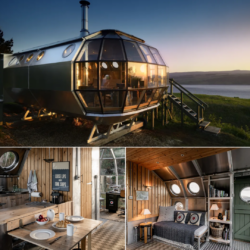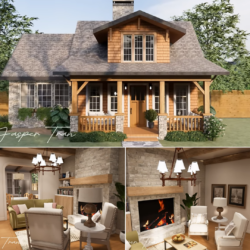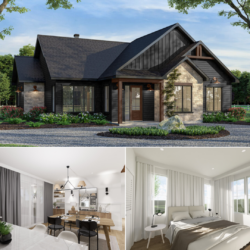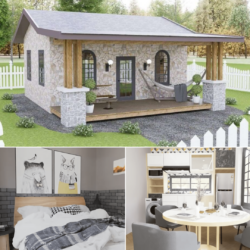
Nowadays, tiny houses are increasingly preferred rather than large and flashy houses. This choice brings many advantages. Tiny houses encourage a lifestyle that is both environmentally friendly and economically sustainable. It also offers a minimalist approach, freeing people from excess and encouraging them to adopt a simple lifestyle.


An exemplary tiny house design combines functionality and aesthetics. This design is usually built on a small footprint and efficiently uses space. Its exterior is generally covered with natural materials, giving it an environmentally friendly appearance. At the same time, modern technologies such as solar panels can be integrated for energy efficiency.

The interior design of tiny houses ensures that every space is used efficiently. For example, the use of space is optimized by using multi-purpose furniture. The bedroom can also be used as a work area or living room. These designs frequently frequently see practical solutions such as foldable furniture and wall beds.

A tiny house kitchen is typically a small but functional space. Modern kitchen equipment and storage solutions allow users to keep everything they need at hand. Additionally, waste production is minimized by using environmentally friendly materials.

The living space combines comfort and elegance. With a small amount of furniture and a minimalist decoration style, the space has a spacious and inviting atmosphere. Large windows and the use of natural light make the interior bright and energetic. At the same time, thanks to open-plan designs, the space feels larger and more spacious.

Bathroom designs of tiny houses are also carefully considered. Despite the limited space, a modern and stylish look is achieved. Smart storage solutions and space-saving equipment make the bathroom space useful.
The outdoor areas of tiny houses are often carefully considered. Verandas, terraces, or garden areas are used to extend living space and offer an experience in touch with nature. These areas are ideal for relaxing, enjoying natural views, or hosting outdoor events.

Tiny houses have many advantages in terms of sustainability. Well-designed insulation systems and energy-efficient devices minimize energy consumption and reduce energy costs in the long run. Additionally, environmentally friendly practices such as rainwater harvesting systems and graywater recycling are also widely used.

Some tiny house designs have the feature of being mobile or portable. In this way, owners can move whenever they want and enjoy the natural beauty of different places. Mobile tiny houses are an ideal option, especially for those who love to travel or want to adopt a lifestyle close to nature.
Tiny house designs generally have a modular structure. This offers homeowners the opportunity to expand or rearrange spaces according to their needs. For example, when the need for an additional room or storage space arises, modular structures can easily adapt.





